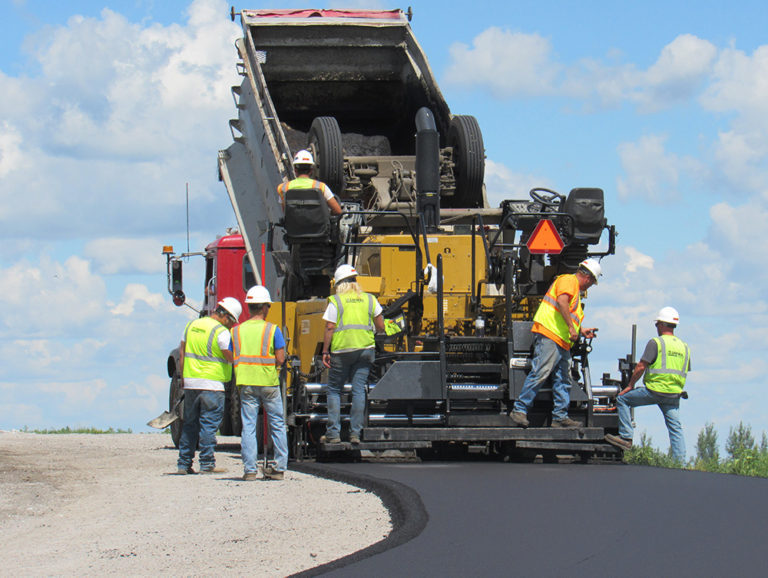“The Conversation Continues: How Construction’s Embodiment of Diversity Leads to Increased Adoption of Innovation” was a part of the free, COVID-19 webinar series sponsored by ABC’s Strategic Partners. Held in a “fireside chat” style, the call accepted questions from those in attendance. It was moderated by Matt Abeles, ABC’s vice president of construction technology and innovation, and Tia Perry, ABC’s director of business development and partnerships.
At a high level, the webinar directed conversation towards establishing how the intersection of culture, diversity and innovation assist contractors with winning over the next generation of leaders, obtaining bigger efficiencies and achieving overall job satisfaction.
Questions included:
- Where and how do you prioritize diversity and inclusion?
- How do you talk about diversity to get more employees to see the business case for inclusion?
- What is the contractor community doing to further D&I efforts?
- What advice would you give a small- to mid-sized contractor for implementing technology or diversity initiatives?
Kacie Brewer, manager of inclusion and diversity at United Rentals, says that her company’s policy revolves around two of their core values, “passion for people” and “continuous innovation,” culminating in a desire to “positively impact all the communities in which we serve,” she says. For Brewer, there is no bigger sales point for inclusion initiatives than “reflecting and representing the communities in which we operate.”
Diversity and inclusion programs are personal for her because they represent the unique opportunity that she has found in the industry. “I’m so thankful that I had the opportunity to learn what our industry is because I never would have sought it out for myself,” Brewer says. “I really want to focus on bringing more diverse backgrounds to our space.”
United Rentals was one of the winners of ABC’s 2019 National Diversity Awards. So, while they already had made significant progress in the area of D&I (see Brewer’s CE profile for more of United Rentals’ award-winning diversity programs), Brewer says COVID-19 was certainly a new challenge. “United Rentals had to think about how to come out on the other side of COVID-19 better than we started,” she says—while keeping all employees connected and on the same playing field. The CEO sent updates each Monday, they used an online communication tool, they uploaded FAQs and made the process fun. The result is a more connected community—technology and innovation as a result of desired connection and inclusion, rather than the reverse.
“If people feel like they have a fair shot, and you have diverse backgrounds that make you a better organization, then you have a springboard for innovation,” Brewer says.
Alli Scott, director of construction thought leadership for Autodesk, agrees with Brewer. “Culture trumps technology and strategy—and we’ve proved that time and time again,” she says. Besides its Diversity, Inclusion and Belonging program, Autodesk has active employee resource groups, thus “anchoring” Autodesk’s business around culture.
“Technology alone isn’t the holy grail, but when you put powerful tools into the hands of smart people, it’s inevitable that innovation can be unlocked,” Scott says. “And when you add on a layer of diversity—diverse thought, diversity with ethnicity, gender diversity—you’re going to be able to create new dimensions.”
There are plenty of reasons beyond technological development to advocate for diversity. A younger workforce will be attracted to these programs, and clients will be more likely to dedicate resources to companies “where they a psychologically safe,” Scott says.
Technology can even be a detriment. “One of the big challenges in the industry is that people are inundated with technology,” says Scott. “But if we give them the right skills and processes, we’re going to enable them to find that workforce to make the smart choice and find tools that matter in the moment.”
Further, she posits, technology (if used properly) can be more than a tool—it can be a force for equity (see CE‘s article in the Jan//Feb 2020 issue, “Software as an Inclusivity Tool”). Scott offers Autodesk as an example, saying that the 2020 conference—which went 100% digital for the first time—“equalized the playing field for a lot of people who previously couldn’t attend.” With over 100,000 people in virtual attendance (up from their usual 15,000 in Las Vegas), Scott says Autodesk will be looking to create digital components alongside the in-person experience in future.
For those looking to create their own programs, Scott says that “innovation, diversity and inclusion are hyper-personal to your company, the needs of your business, the way your company operates, your company culture and your community.” She advocates for each company to consider its own team and create its own approach.
“Not everyone is ready for robots on the jobsite or to spend $100,000,” she says.
Most importantly, Scott says, “start small and celebrate small wins.”
The webinar recording is available online, for members only, on the ABC Academy for Construction Ethics, Compliance & Best Practices.







